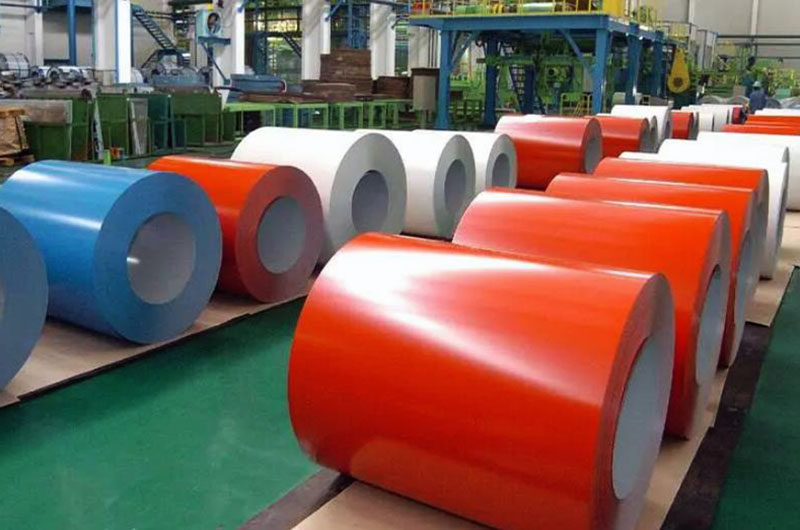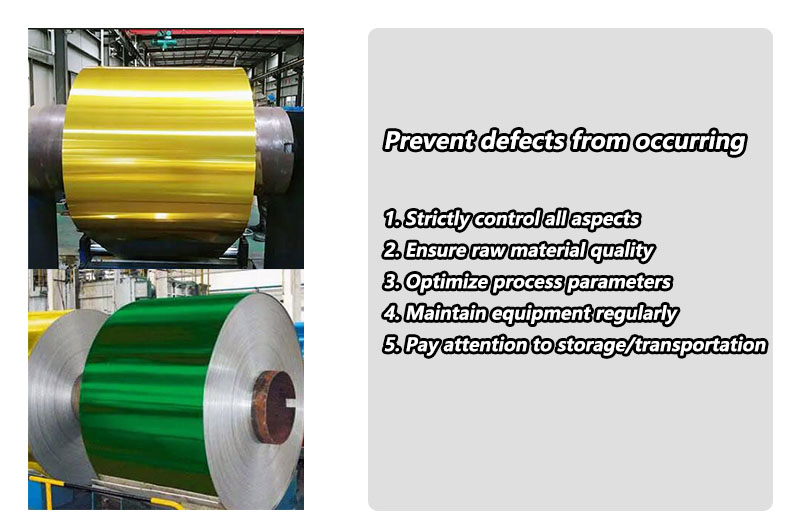Defects in color-coated aluminum coils can be caused by a variety of reasons, which involve all aspects of the production process. Here are some common causes that may cause defects in color-coated aluminum coils:
Substrate quality issues
The base material of color-coated aluminum coils is usually aluminum coils or aluminum plates. If the quality of the substrate is unstable, such as pores, slag inclusions, uneven surfaces, etc., it will cause defects after coating.
suggestion
Choose a high-quality aluminum coil supplier to ensure that the base material is free of defects such as slag inclusions and pores.
Regularly check the quality of substrates and communicate with suppliers to resolve problems in a timely manner.

Coating formulation issues
If the formulation of the coating is inappropriate, including the proportion and quality of resins, pigments, additives, etc., it may result in poor adhesion, poor weather resistance, or other defects in the coating.
suggestion
Use qualified coating formulas to ensure that the proportion and quality of resins, pigments, and additives meet standards.
Coating process issues
The instability of parameters such as temperature, humidity, and coating speed during the coating process will affect the uniformity of the coating and may lead to defects such as spots and wavy lines.
- Temperature: The temperature of the coating fluid can affect its viscosity and fluidity. Generally speaking, the coating temperature needs to be within a certain range to ensure that the coating can evenly cover the surface when applied and achieve the desired performance during the subsequent curing process.
- Humidity: Changes in humidity may affect the drying speed, adhesion and other properties of the coating. Therefore, in some cases it is necessary to perform coating under relatively constant humidity conditions, or to adjust the coating process to adapt to changes in ambient humidity.
- Coating speed: Coating speed refers to the speed at which the coating equipment moves during the coating process. A coating speed that is too fast may result in uneven coating, while a coating speed that is too slow may affect production efficiency. Therefore, an appropriate coating speed needs to be determined based on the characteristics of the coating equipment and coating.
Primer treatment issues
Primer preparation is critical to coating adhesion. If the primer is not handled properly, it can cause adhesion problems between the primer and the substrate or coating, resulting in defects.

Curing baking problem
During the curing and baking process of the coating, improper temperature and time control may lead to insufficient curing of the coating, resulting in stickiness or hardness problems.
Oil or impurity pollution
If color-coated aluminum coils are contaminated by oil, impurities, etc. during production, transportation, storage, etc., surface defects may occur.
mechanical injury
During handling, cutting, processing, etc., mechanical damage may cause scratches, dents and other defects.
envirnmental factor
External environmental factors such as air pollution, ultraviolet rays, moisture, etc. may also affect the surface of color-coated aluminum coils and cause defects.
Improper pretreatment process
Pretreatment is the surface treatment performed on the aluminum coil before coating, including cleaning, pickling, chemical conversion treatment, etc. If the pretreatment process is improper, the coating may not adhere firmly and may be prone to defects.
Equipment issues
The performance and status of coating equipment can also have an impact on product quality. Problems such as insufficient equipment maintenance, clogged nozzles, and insufficient coating curing may lead to defects.
In order to prevent defects in color-coated aluminum coils, it is necessary to strictly control all aspects of the production process to ensure the quality of raw materials, optimize the coating process, control the coating formula, strengthen equipment maintenance and management, and standardize operating procedures. At the same time, quality testing and improvement are carried out regularly to discover and solve potential problems in a timely manner.

